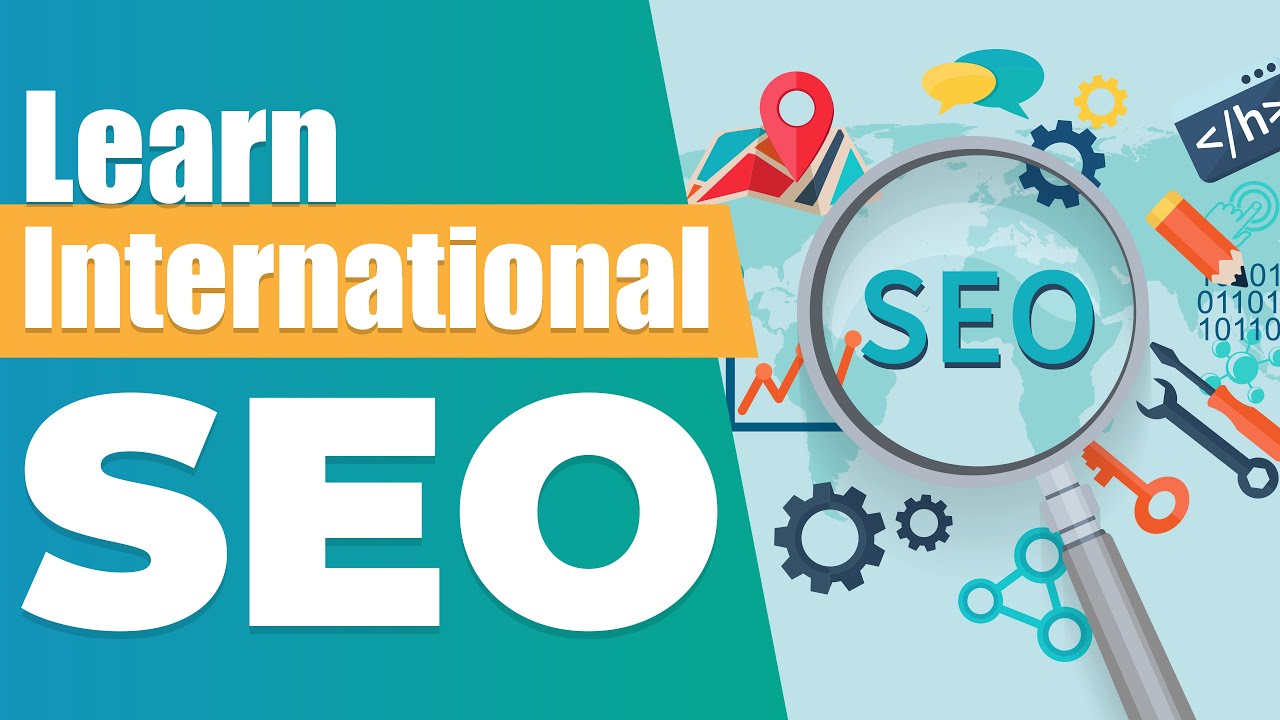Discover With Semalt The Best Strategies To Move Your Site From Local SEO To International SEO

Has your business grown to the point where you want to start gaining customers outside your country? Or perhaps you are building your website from the ground up for markets other than domestic? Whatever the reasons, if you want your website to succeed in international positioning, you need to know how to develop the right strategy for it. Read this article, and you will learn all about the differences between SEO treatments for a local website and one aimed at foreign users.
The world also exists outside of Google
Most websites operating in the domestic market focus primarily on meeting the specific SEO standards of the Google search engine. They rank it by default so that its competition is almost completely ignored. This is not strange, as in some countries up to 95% of searches are done using Google. Bing is perhaps the only other search engine used by more than 1% of users. Everything else is of marginal importance.
Ignoring 5% of the country's users has no dramatic consequences. Abroad, on the other hand, the situation is changing. Google is still the undisputed market leader almost everywhere, but in many other countries, its competition is much better. For example, Bing alone represents 5% of the total, according to Statcounter statistics in North America. Add Yahoo or DuckDuckGo, which add additional percentages to this result.
If your expansion goal is Eastern, the situation gets even more complicated. In Russia, only 53% of users use Google, and Russia's Yandex ranks right next to the American search engine, with a 45% share of searches. This means that by positioning a website for our neighbor only on Google, you won't reach nearly half of your potential customers. In China, the statistics are even more shocking. Only 2% of users there use Google, and the market is dominated by Baidu (75%) and Sogou (15%).
Other demographics are also worth paying attention to. For example, the gender and age of your users or potential customers can be of great importance. For example, according to a study by the marketing agency 'Further', statistically speaking, more women than men use Bing or Yahoo. In addition, searchers over the age of 45 also prefer the aforementioned search engines to Google more often. All this data should make you realize that positioning your website for any country or region abroad must be preceded by a thorough analysis.
This is both to find out which search engines are most popular in a given location, but also among which demographic groups. This will allow you to plan your website's SEO strategy early on, adapt it to local conditions and considerably increase its chances of success.
Website domain and foreign positioning
One of the basic steps in international SEO is to acquire the appropriate top-level domain. Domains are divided into international domains such as ".com" or ".org" (generic TLD) and national domains (country code TLD). The latter contain codes that correspond to individual countries. In the case of Ukraine, it is " .ua ", and for example, in German URLs, we will find the ending ".de".
Thanks to these data, search engine algorithms have an easier task in determining which country the site is focused on. Domestic domains are often favored and shown first in local search results. You can easily check it yourself. If you search for popular international brands in a search engine, such as Amazon, the first results that will show to you will end with ".ua". The mere fact that the largest websites (including Google itself!) use ccTLD should make you follow this practice.
However, you must remember that putting the website on a new, local domain means that it will have a separate authority. The country rank achieved by your original site will not have any bearing on the new one. However, the solutions that allow you to achieve it will also help build an SEO strategy for the international website.
Subdomains and directories with the language version
An alternative to putting your website on a new domain is to create a subdomain or directory. It is certainly a cheaper solution, unfortunately, it has some limitations. They are a weaker signal to search engines about the region in which a given page is focused. In the case of catalogs, it is also impossible to assign the language version of the subpage to recipients from a specific country.
Their positioning in the organic search results of another country is much more difficult than in the case of ccTLD. In addition, users who prefer to use the services of local sites will immediately see that they are dealing with a foreign brand, which may lower the quality of their experience and result in leaving the site.
Atrybut hreflang
After choosing a domain or subdomain, it is also important to define hreflang tags. They are designed to help search engines distinguish between different versions of the website dedicated to different locations or languages. This allows you to eliminate the problem of content duplication that occurs in the case of websites with similar languages. For example:
<link rel = "alternate" href = "http://przyklad.com" hreflang = "en-us" />
Defines the page as "en", but is targeted at "us" Americans. Thanks to this, the search engine will distinguish it from a similar website targeting the UK market and index it separately.
Content translation - what to pay attention to?

Language is also a barrier to SEO. The content on the website must be translated to make it understandable for a foreign recipient. Search engines also pay attention to whether the language used in the content corresponds to the site's geolocation. According to data from the Internet World Stats website, English is used by every fourth internet user. Therefore, taking shortcuts and creating an English version of the site with different expansion directions in mind will not be enough (unless these destinations are only English-speaking countries).
For your content to reach as many people as possible, you need to translate it to specific locations. Importantly, for the sake of SEO, you should invest in professional translators. The use of generally available tools such as Google Translate will be quickly detected by search engine algorithms and will result in a decrease in the site's position. For example, Google's guidelines make it clear that content translated automatically and without human supervision and correction violates their rules.
Key phrase analysis
There is another reason why you should forget about the literal translation when translating a page into other languages. Not all content targeted at native users will be equally good for foreign users. Sometimes it may not even have any relevance in the new environment. Therefore, with the creation of a website in new geolocation, the keyword analysis for a given region should be performed newly.
Phrases literally translated from English may be too competitive or have little potential to attract traffic. You should check this as soon as possible and develop a new content marketing strategy based on the data obtained.
In some cases, you will need to use tools tailored to specific search engines that are popular in a given location. The Dedicated SEO Dashboard will be very useful in this condition. Because it is one of the latest generation SEO tools that work in 15 languages. Only after going through this step can you decide whether your current content is suitable for translation or whether you need to create something completely new for the needs of a foreign website.
Linguistic meta tags
To better inform the search engine robots about the content of the page, you should use two meta tags. The first is the "lang" attribute, which tells what language the content is in:
<html lang="ag">
In the example above, it means that the content is written in English. However, this does not necessarily mean that it is aimed only at English users. For example, it could be an exercise text addressed to foreign language students. To inform the search bots of this, the header "Content-Language" is used. This way, you can target more than one target language group.
Acquiring a network of links abroad

Building a new version of your site for the overseas market means that you will have to recruit backlinks from scratch to strengthen its authority. They should come from pages in the same language as the website itself. This makes them more relevant and useful to the local user.
The State of Digital website conducted a study in which test groups were asked to describe their reaction to a situation in which clicking a link on a page in their language would be transferred to a foreign language portal. Between 30% and 60% of people (score varies by country of respondents) would consider it a bad user experience and leave the linked site without seeing its content. These are quite high values that prove that the lack of a local network of links can, in the worst cases, mean a loss of up to ⅔ of potential traffic.
In the remaining assumptions, the strategy of acquiring backlinks does not differ from the one made for the domestic site. It includes both natural linking by building the website's credibility and creating valuable content, cooperation with other industry websites, as well as links obtained using sponsored articles. Keep in mind, however, that depending on the country, the cost of the latter may be very different from what you are used to in your home country.
Frequent negligence in international SEO
Many factors can negatively affect your website after launching it in another country. Among the frequently mentioned errors, there is, among others, the mismatch of the name with the foreign market. Rebranding is always a tough task, but it can be necessary in some cases. A foreign name in some industries inspires less trust than the more local or universally international one. According to research conducted by Agility PR Solutions, as many as 75% of respondents pay attention to the origin of the brand before deciding on its services. Before the foreign expansion, you should conduct an analysis and check whether it will matter in your industry.
Another mistake may be neglecting server issues. It is best to set up a website aimed at foreign users on a server physically located in the target country. Thanks to a closer location to visitors, your website will work more efficiently and faster. Not only does this provide a better experience for potential customers, but it is also a ranking factor.
Summary
International positioning does not differ in its assumptions from domestic positioning. The SEO techniques remain the same as the strategy-building methods. The key to success is to understand that it is not enough to just copy the original page and translate its content. All activities should be preceded by a thorough analysis of local conditions in the field of user preferences and the popularity of key phrases. In the case of more specific markets, such as Russia or China, it may be necessary to hire an appropriate marketing agency that has knowledge in the field of search engine positioning.